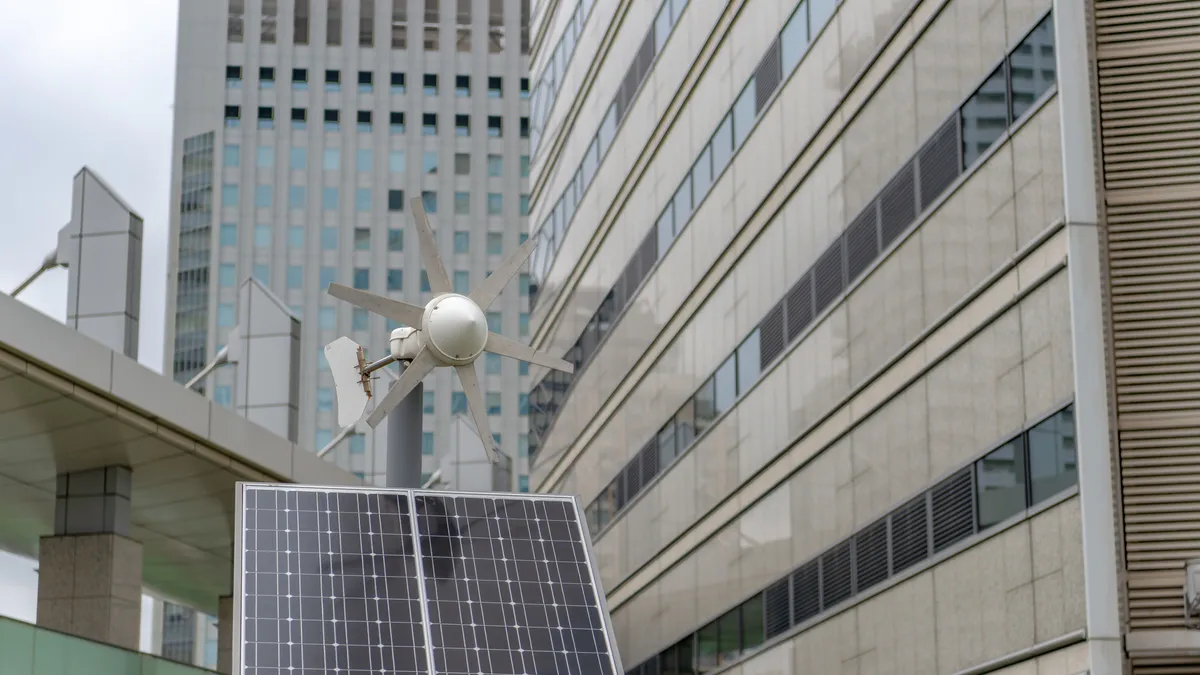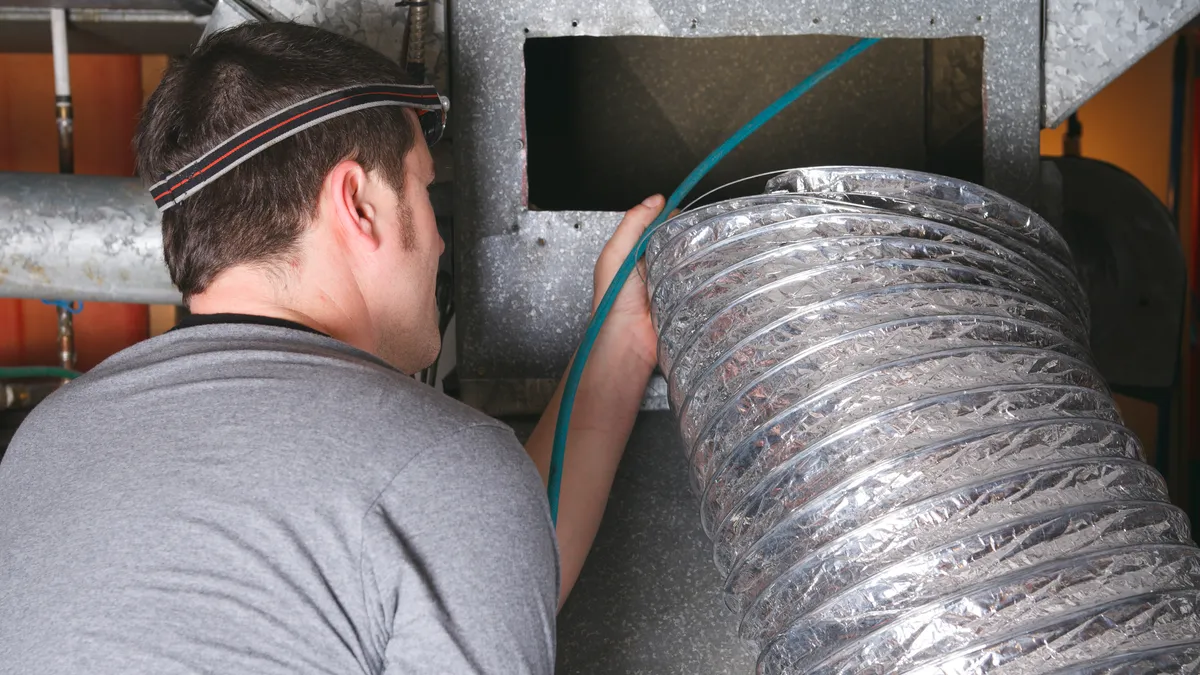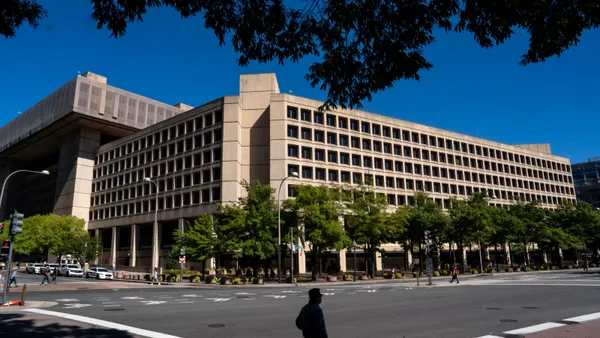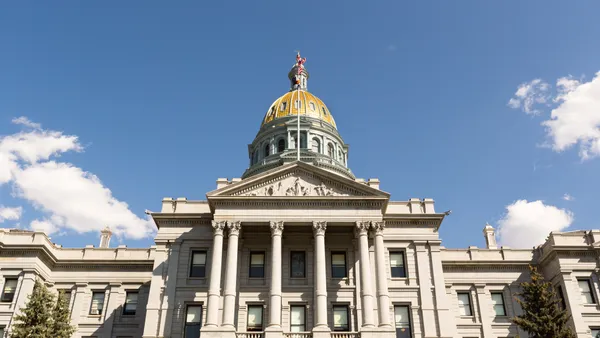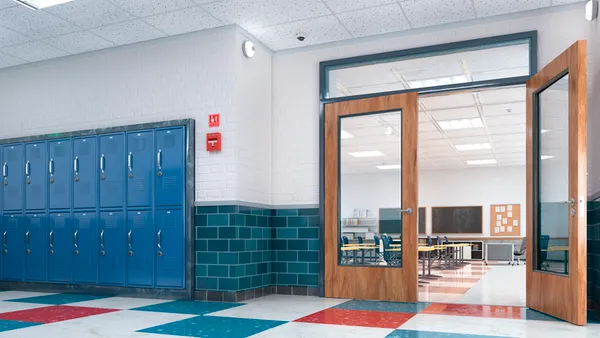Dive Brief:
- Statewide adoption of building performance standards is on the rise, reflecting a commitment to address climate change, according to CBRE’s U.S. Building Performance Standards in 2023 and Beyond report, released in October.
- Oregon, Maryland, Washington and Colorado have passed statewide laws for implementing BPS; other states mandate the benchmarking of energy use or greenhouse gas emissions for some buildings.
- Although penalties for noncompliance have grown in national focus due to New York City’s proposed enforcement of Local Law 97, green lease clauses and submetering also have the potential to reduce building carbon emission and energy expenses, the report notes.
Dive Insight:
In January 2022, the federal government launched the National Building Performance Standards Coalition, a collective partnership among state and local governments aimed at advancing building performance legislation. Four states and about 10 local jurisdictions have implemented building performance standards, while California, Minnesota, and dozens of cities and counties require benchmarking for some buildings, according to the Institute for Market Transformation, which manages the National BPS Coalition. The CBRE report examined the extent of BPS implementation, the impacts of penalties on commercial real estate and notable implementation strategies in U.S. cities and states.
Statewide adoption ensures that compliance and community benefits cover not just cities but the entire state. However, many communities have enacted BPS policies at city and county levels where state policies have not yet been implemented, according to CBRE. Detroit, for example, unanimously adopted an energy and water benchmarking policy for existing buildings last week, requiring all municipal, commercial and multifamily buildings over 100,000 square feet to annually report their usage beginning in 2024.
Financial penalties for policy violations — which cities such as Denver, Boston and New York City are beginning to implement — will encourage accountability and accelerate decarbonization, the report says. Penalties for noncompliance vary by jurisdiction, with some having “relatively low annual penalties, whereas others have heavy penalties,” the report notes. Implementing penalties helps local authorities create a more level playing field for all market participants and incentivizes owners to invest in energy efficiency and sustainability practices, CBRE said.
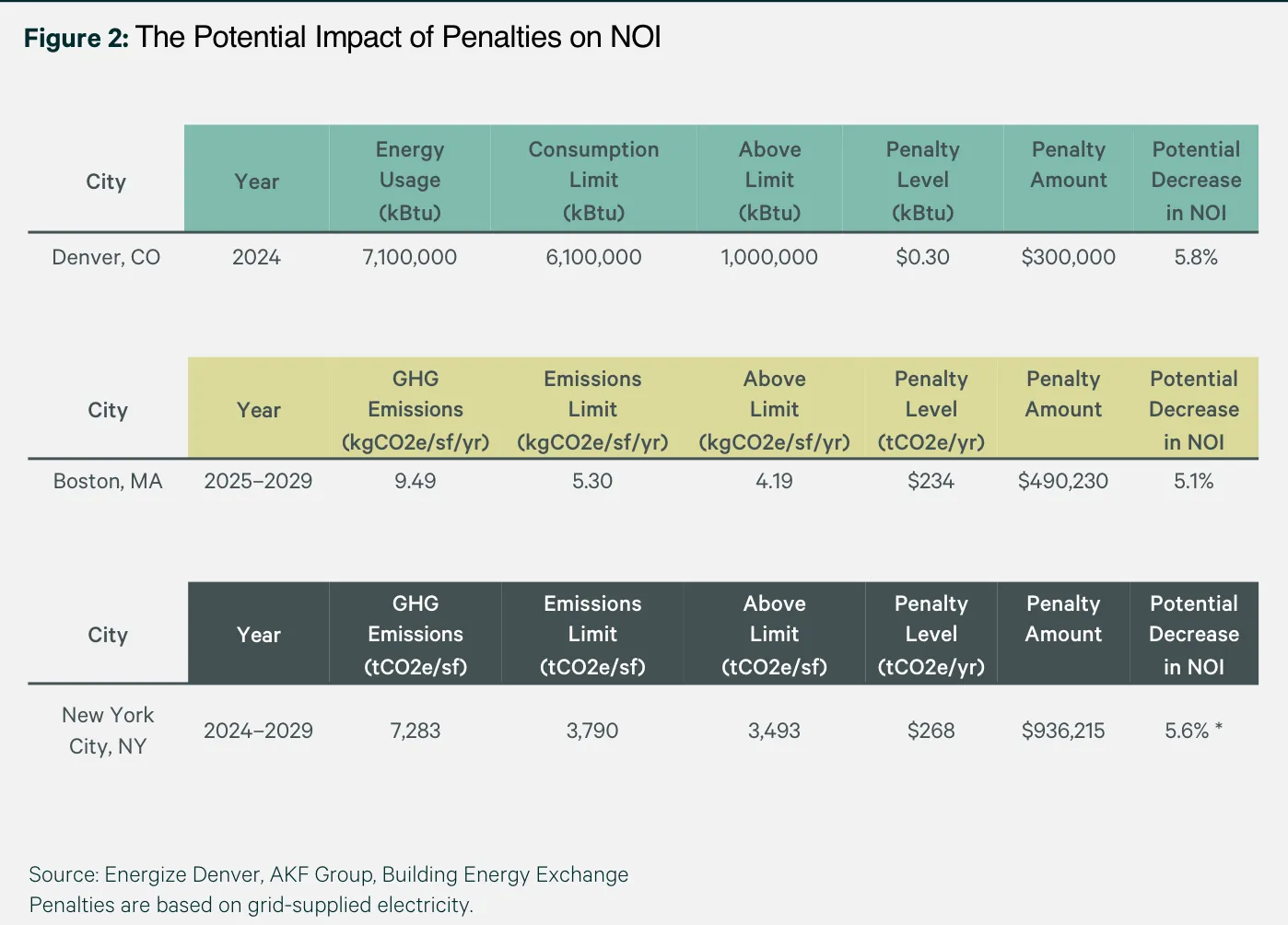
Penalties seek to encourage building decarbonization rather than punish building owners who fall behind in carbon and energy reductions, CBRE says. Most jurisdictions impose annual fines on a per-day basis, the report says, noting that three U.S. jurisdictions base penalties on energy consumption over a 12-month period.
As stakeholders, investors, tenants and regulators increasingly prioritize climate change concerns and expect businesses to demonstrate commitments and progress toward sustainability, noncompliance with BPS can lead to negative perceptions among stakeholders, CBRE said. Thus, some property owners or operators could face damage to their reputations through public disclosures of noncompliant assets.
Further, commercial tenants, especially those with corporate social responsibility and sustainability policies, prefer leasing spaces in energy-efficient and low- or zero-carbon buildings. This could make it more difficult for noncompliant properties to attract and retain tenants, “leading to higher vacancy rates and lower returns on investment,” the report said.
Aligning with BPS
Traditional triple net lease structures and utility agreements pose challenges for operators who face pressures to align with regulatory requirements and perform potentially costly energy efficiency retrofits and upgrades, the report stated.
In traditional lease agreements, landlords are not incentivized to invest in measures such as on-site solar generation, which pay back over time through operational cost savings. The report recommends that tenants and landlords collaborate on green lease clauses — additions that outline specific obligations and commitments related to energy efficiency measures.
CBRE points to lease negotiations as a key starting point for achieving decarbonization goals. “Tenants willing to commit to longer lease terms can gain more negotiating leverage when requesting concessions related to green lease clauses. These concessions may involve reduced rent or less aggressive rent escalations for tenants committed to sustainable practices,” the report states. “Additional incentives might include higher than usual tenant improvements and extended periods of free rent.”
Submetering, which enables measuring and monitoring individual tenants’ energy consumption, is a high-impact retrofit that could be included in these green clauses, CBRE said. “Prior to initiating any energy use enhancement endeavor,” operators should ensure that building performance data is easily accessible through submetering, the firm said.
The report notes that in addition to helping operators detect disparities in energy use and identify savings opportunities, submetering allows proactive monitoring and maintenance of HVAC, lighting and building automation systems. Citing research from the U.S. General Services Administration, CBRE said that applying submetering to a building with multiple tenants can lead to energy savings of up to 15%.
Washington, D.C.’s building energy performance standards were the focus of a panel at ASHRAE’s recent Decarbonization Conference for the Built Environment. In a discussion on the jurisdiction’s BPS, now two-and-a-half years into its first cycle, panelists emphasized the importance of accurate benchmarking and energy audits, noting that fossil fuel removal and building electrification are near-term considerations for meeting progressing regulation.
Correction: A previous version of this article misstated the status of state-level building performance standard laws. Oregon adopted BPS in 2023, joining Maryland, Colorado and Washington as states that mandate energy improvements for certain buildings.



